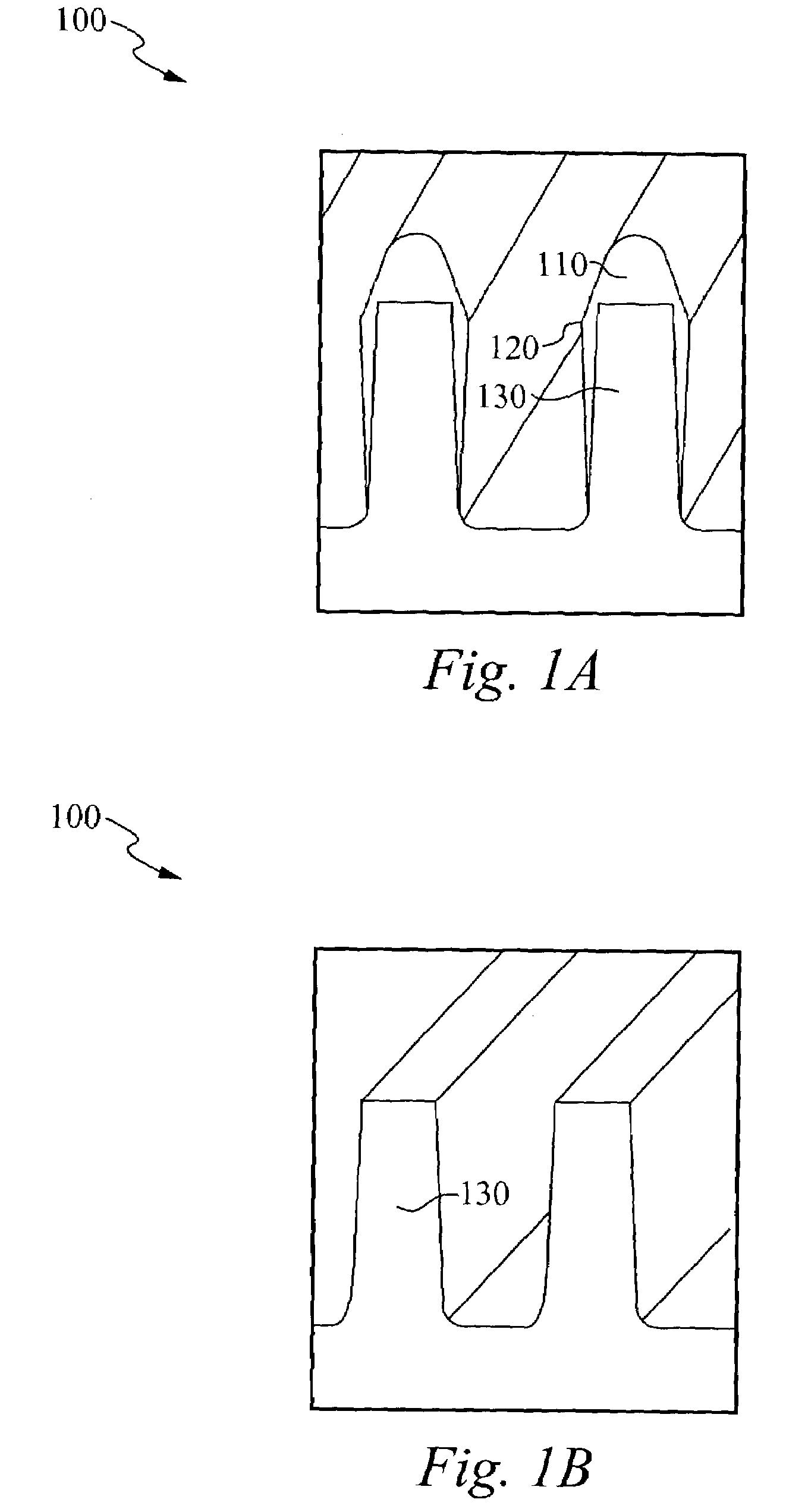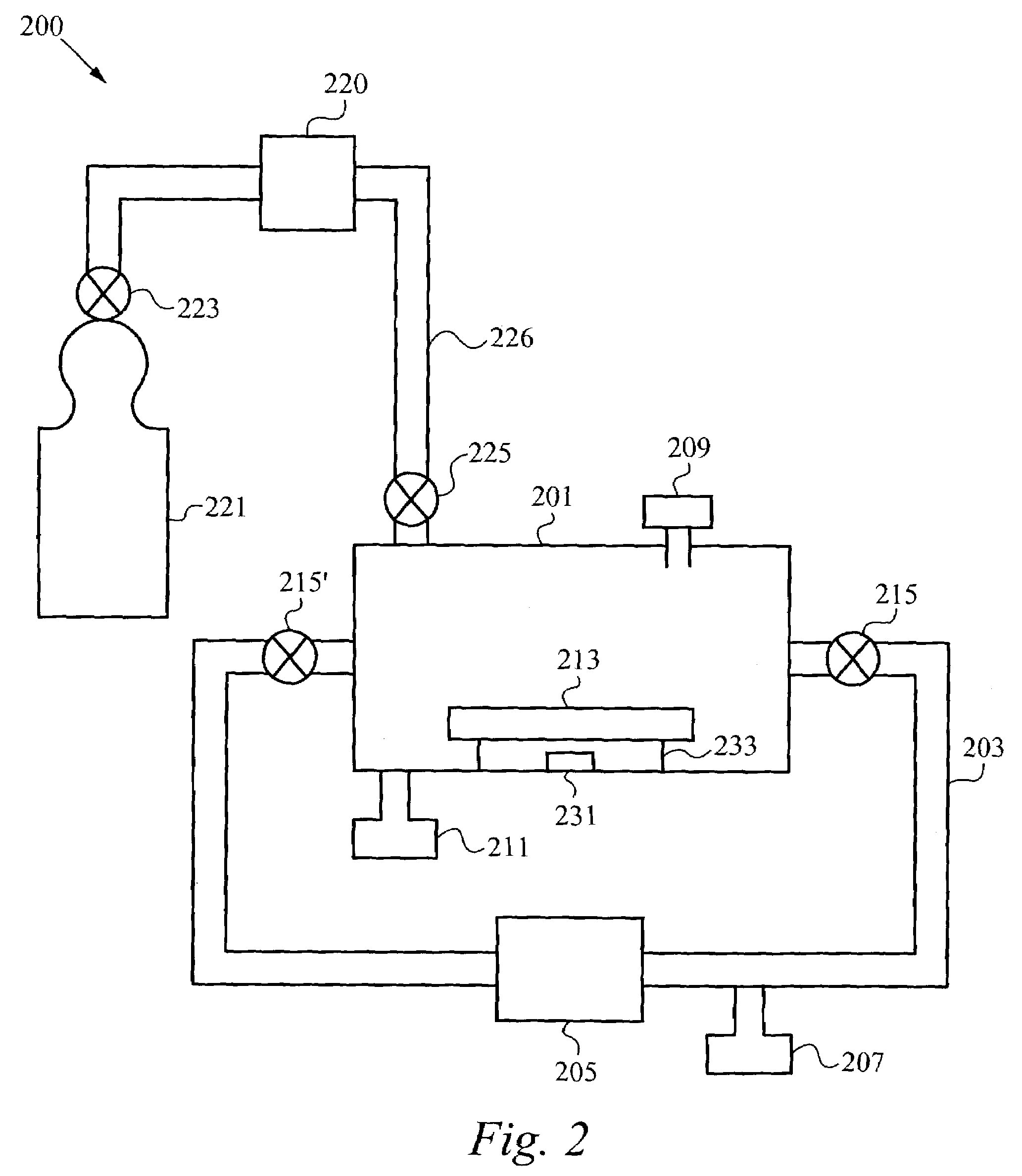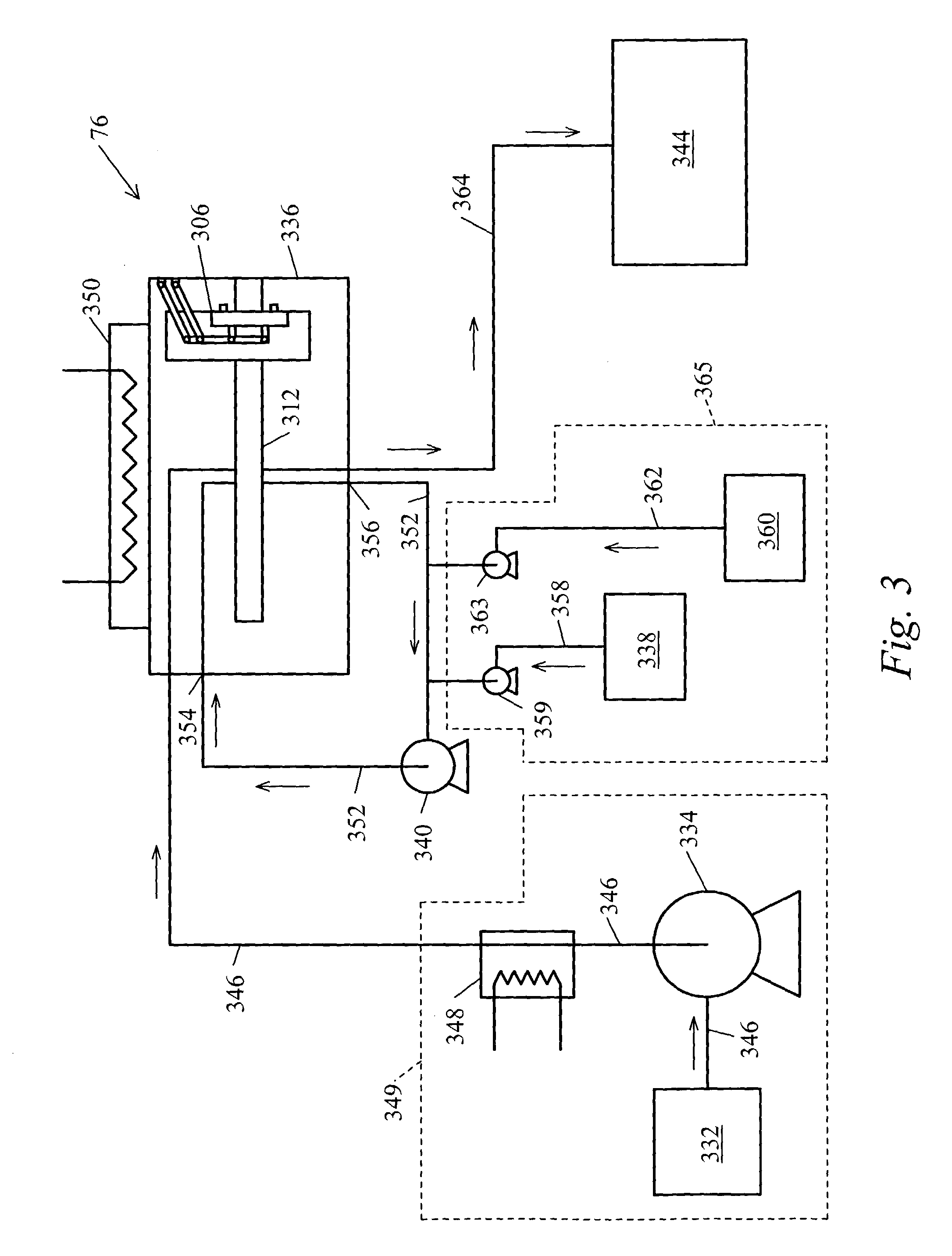Method of treatment of porous dielectric films to reduce damage during cleaning
a dielectric film and porous technology, applied in the direction of cleaning using liquids, instruments, semiconductor/solid-state device details, etc., can solve the problems of difficult to clean resist or residues from low-k dielectric materials without affecting the low-k dielectric material, and large residues and polymers are typically left on the sidewalls. , to achieve the effect of reducing the loss of thickness or widening of openings, reducing the loss o
- Summary
- Abstract
- Description
- Claims
- Application Information
AI Technical Summary
Benefits of technology
Problems solved by technology
Method used
Image
Examples
Embodiment Construction
[0021]Materials exhibiting low dielectric constants of between 3.5–2.5 are generally referred to as low-k dielectric materials. Porous materials with dielectric constant of 2.5 and below are generally referred to as ultra low-k (ULK) dielectric materials. For the purpose of this application low-k dielectric materials refer to both low-k dielectric and ultra low-k dielectric materials. Low-k dielectric materials are usually porous oxide-based materials and can include an organic or hydrocarbon component. Examples of low-k dielectric materials include, but are not limited to, carbon-doped oxide (COD), spin-on-glass (SOG) and fluorinated silicon glass (FSG) materials. These porous low-k dielectric material films typically contain carbon and hydrogen and are deposited by methods such as spin-on or CVD. These films are processed in such a way as to produce a film resistant to damage from cleaning formulations and typically have an inorganic matrix of either a SiOx base or a SiOx-CxHy bas...
PUM
| Property | Measurement | Unit |
|---|---|---|
| Temperature | aaaaa | aaaaa |
| Pressure | aaaaa | aaaaa |
| Dielectric polarization enthalpy | aaaaa | aaaaa |
Abstract
Description
Claims
Application Information
 Login to View More
Login to View More - R&D
- Intellectual Property
- Life Sciences
- Materials
- Tech Scout
- Unparalleled Data Quality
- Higher Quality Content
- 60% Fewer Hallucinations
Browse by: Latest US Patents, China's latest patents, Technical Efficacy Thesaurus, Application Domain, Technology Topic, Popular Technical Reports.
© 2025 PatSnap. All rights reserved.Legal|Privacy policy|Modern Slavery Act Transparency Statement|Sitemap|About US| Contact US: help@patsnap.com



